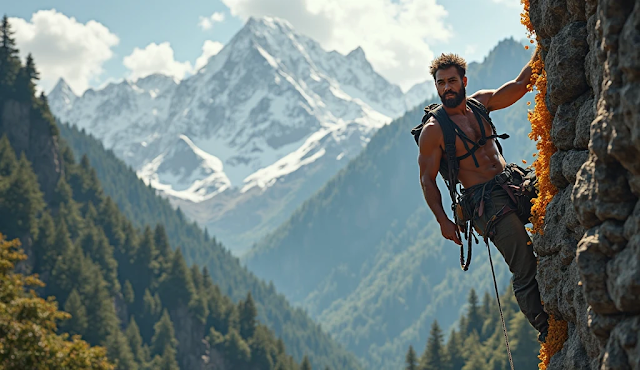Discover Lumbini, Nepal, the UNESCO World Heritage Site and birthplace of Buddha. Explore its history, spiritual significance, top attractions, and practical travel tips in this guide.
Introduction: The Spiritual Heart of Buddhism
Nestled in the fertile plains of Nepal’s Rupandehi District, Lumbini stands as one of the world’s most revered spiritual destinations. Recognized as the birthplace of Siddhartha Gautama, who later became Lord Buddha, this UNESCO World Heritage Site attracts millions of pilgrims, historians, and travelers annually. More than just a religious landmark, Lumbini embodies peace, cultural unity, and the enduring legacy of Buddhism. In this guide, we delve into Lumbini’s ancient history, archaeological wonders, sacred sites, and practical tips for an enriching visit.
1. The Historical Significance of Lumbini
The Birth of Siddhartha Gautama
According to Buddhist texts, Queen Maya Devi, en route to her parental home in Devadaha, gave birth to Prince Siddhartha in 623 BCE under a sal tree in Lumbini. The event is marked by the Maya Devi Temple, which enshrines the exact spot of Buddha’s birth. Ancient scriptures like the Pali Canon and Ashoka’s inscriptions corroborate Lumbini’s authenticity, making it a cornerstone of Buddhist heritage.
Lumbini in Ancient Texts
Ashoka Pillar: Erected by Emperor Ashoka in 249 BCE, this sandstone pillar bears Brahmi script declaring Lumbini as the Buddha’s birthplace and grants tax-free status to the village.
Chinese Pilgrims’ Accounts: Faxian (5th century CE) and Xuanzang (7th century CE) documented Lumbini’s monastic complexes and sacred ponds in their travelogues.
UNESCO Recognition
Designated a World Heritage Site in 1997, Lumbini’s preservation is guided by the Lumbini Development Trust, ensuring its archaeological and spiritual integrity for future generations.
2. Archaeological Marvels of Lumbini
Maya Devi Temple
Sacred Garden: The temple complex houses the Marker Stone, pinpointing Buddha’s birth, and the ancient bathing pool where Queen Maya Devi purified herself.
Nativity Sculpture: A 2nd-century CE sandstone carving depicting Buddha’s birth is displayed here.
Ashoka Pillar
A testament to Emperor Ashoka’s devotion, this pillar is among the oldest tangible links to Buddha’s life.
Ongoing Excavations
Recent digs have uncovered monastery ruins, stupas, and terracotta artifacts dating to the Mauryan and Kushan periods (3rd century BCE–3rd century CE).
3. Top Attractions in Lumbini
Monastic Zone: A Global Tribute to Peace
Theravada Monasteries: Sri Lanka’s Sri Lankan Monastery and Thailand’s Royal Thai Monastery showcase traditional architecture.
Mahayana Temples: China’s Zhong Hua Buddhist Monastery and Vietnam’s Dae Sung Shakya Temple feature ornate pagodas.
Tibetan Buddhist Centers: The Dharma Swami Maharaja Buddha Vihara offers meditation retreats.
Lumbini Museum
Exhibits include ancient coins, manuscripts, and relics tracing Buddhism’s spread across Asia.
World Peace Pagoda
Built by Japanese Buddhists, this 41-meter white stupa symbolizes global harmony and offers panoramic views of Lumbini.
Lumbini Crane Sanctuary
A wetland reserve protecting endangered sarus cranes, revered in Buddhist lore for their monogamy.
4. The Spiritual Experience: Pilgrimage and Rituals
Buddha Purnima
Celebrate Buddha’s birth, enlightenment, and death during Vesak (April/May) with processions, prayers, and lantern releases.
Meditation and Retreats
Lumbini International Vipassana Meditation Center: Offers 10-day silent courses.
Eco-Pilgrimage Trails: Walk or cycle through serene gardens and monasteries.
Cultural Etiquette
Dress modestly, remove shoes before entering temples, and circumambulate stupas clockwise.
5. Practical Travel Guide to Lumbini
Getting There
By Air: Gautam Buddha Airport (BWA) in Bhairahawa, 22 km from Lumbini, connects to Kathmandu.
By Road: 6-hour drive from Kathmandu or 4-hour journey from Pokhara.
Best Time to Visit
October–March: Pleasant weather (15–25°C) ideal for exploration.
Avoid monsoon season (June–September) due to heavy rains.
Where to Stay
Lumbini Village Lodge: Budget-friendly stays near the sacred garden.
Hotel Buddhamaya Garden: Mid-range option with modern amenities.
Lumbini Hotel Emely: Luxury accommodations with spa services.
Local Cuisine
Dal Bhat: Traditional lentil soup with rice.
Sekuwa: Grilled meat skewers from nearby Terai communities.
6. Lumbini’s Role in Modern Buddhism
Interfaith Dialogue
Lumbini hosts global conferences promoting peace, such as the Lumbini Peace Summit, attended by Buddhist leaders and scholars.
Sustainable Tourism Initiatives
Solar-powered monasteries and waste management programs aim to preserve Lumbini’s ecology.
Future Developments
The Lumbini Master Plan, designed by Kenzo Tange, envisions expanded gardens, research centers, and eco-friendly infrastructure.
7. FAQs About Visiting Lumbini
Q: Is Lumbini safe for solo travelers?
A: Yes, Nepal is tourist-friendly, but hire licensed guides for remote areas.
Q: Are there entry fees?
A: Foreigners pay NPR 500 (~1).
Q: Can non-Buddhists visit?
A: Absolutely—Lumbini welcomes all seeking cultural or historical insight.
Conclusion: Embark on a Journey to Enlightenment
Lumbini is more than a destination; it’s a portal to the origins of Buddhism and a testament to humanity’s quest for peace. Whether you’re a pilgrim, history enthusiast, or curious traveler, Lumbini offers transformative experiences that resonate long after you leave.
Plan Your Pilgrimage Today!
👉 [Explore Lumbini Tour Packages]
“Lumbini birthplace of Buddha”
“Maya Devi Temple Nepal”
“Buddhist pilgrimage sites”
“UNESCO World Heritage Site Lumbini”
“Travel guide to Lumbini”
How to Plan a Spiritual Trip to Nepal
External Links:

.png)






0 Comments